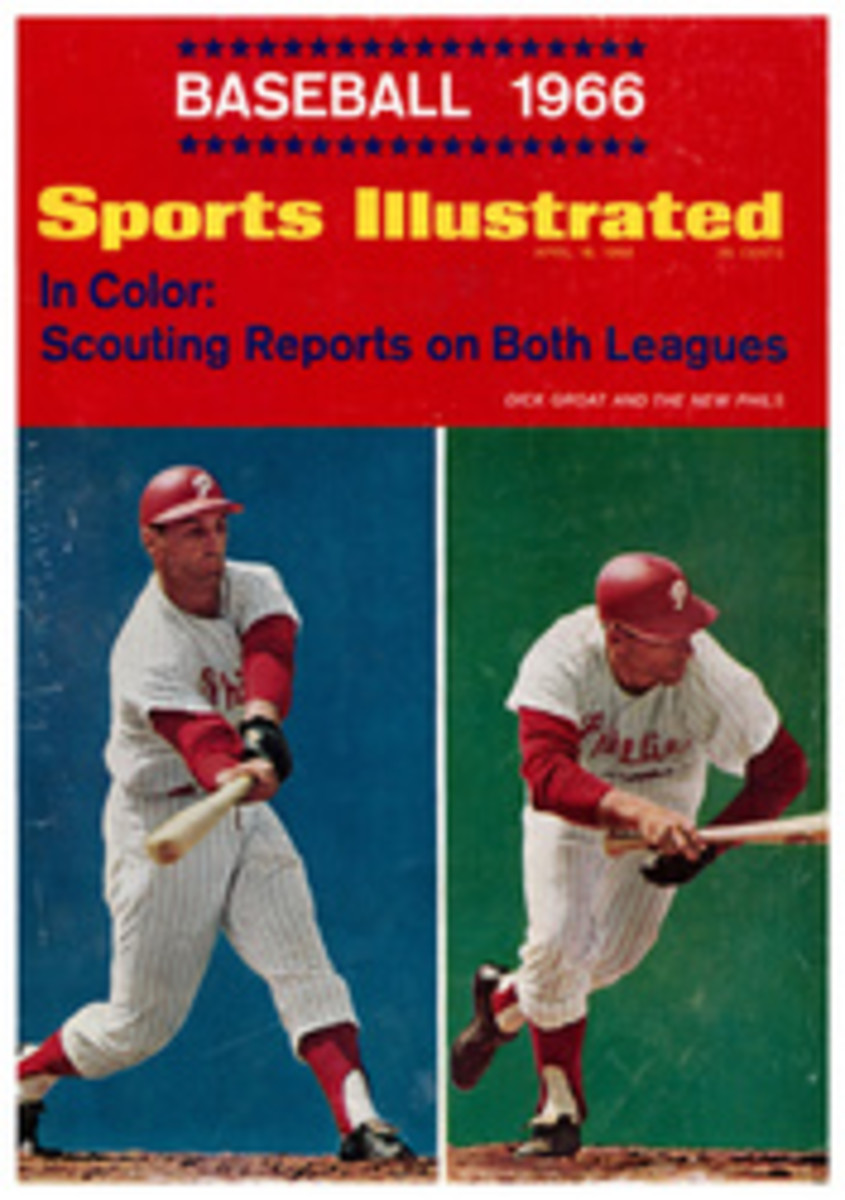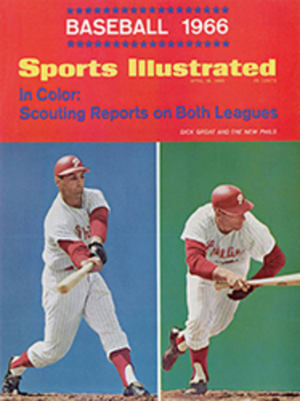
ACROSS THE PAST TO MANILA
Few yachtsmen can resist the lure of the South China Sea. Capricious as the typhoons that roil its surface, somnolent as an equatorial sun, sultry as a monsoon, it captures a seafarer's imagination in its ageless tides. The soldiers of Kublai Khan sailed the South China Sea to Java. Magellan sailed across it to claim the Philippines for Spain. MacArthur fled from the advancing armies of Japan on the same waters that supported the war canoes of Mindanao Moros, the golden barges of the kings of Thailand, Chinese junks and Spanish galleons, Yankee clippers, salt-caked British freighters and gray-clad warships from the U.S. carrying home the dead from Bataan, Corregidor and—now—Vietnam.
For me, a reporter who has spent the past 12 months covering that tragic war in Vietnam, the invitation to join the crew of the Columbine on the third biennial yacht race across the China Sea from Hong Kong to Manila was as welcome as a breath of fresh air to a man in a bomb cellar.
Columbine, a 41-foot Sparkman & Stephens sloop, was designed and built at a cost of some $40,000 for a bookish expatriate American named Harry Colfer, a doctor who had never raced anything in his life before, much less an oceangoing yacht. A fussbudgety sort of man who spent seven years practicing medicine in London and another seven in Hong Kong, Dr. Colfer took many hours off during the last two years to supervise every detail of the building and fitting out of his new boat.
Understandably, since it was mustered in Hong Kong, the crew that Colfer assembled for the run to Manila was a motley of national origins. The skipper, Owner Colfer himself, was a product of Wisconsin and Montana. The No. 2 man on board, our navigator and sailing master, was a big, husky Dutchman named Constant van Kretschmar. A splendid, stern-voiced sailor, he was born in Surabaya when the Dutch ruled the East Indies and spent a decade in Hong Kong trying to lose the accent he had picked up in American-run schools. First Mate Frank Rothwell's ancestors learned the sailing business a century ago en route from New Bedford, Mass. to Pearl Harbor, Hawaii. Ship's Cook Jack Young looked like a leathery Paladin and hailed from Los Angeles. Mike Lovatt was a China-born Irishman whose good looks were sufficient to get him an occasional job posing for handsome advertisements. Harry Colfer Jr., the owner's 16-year-old son, was born in the States and educated in England, while Nigel Kay was, by his own admission, "a true Englishman, if you don't mind."
The plan at the start—there is always a plan at the start of an ocean race, and it always proves futile—was to sail a course about 2¬∫ below the rhumb line in the hope that a northerly set combined with brisk beam winds would carry Columbine straight to Manila with no further ado. It was rainy and overcast as the fleet got under way, but the wind held beautifully all through the first day. The big South African ketch Stormvogel, West Wind II and Columbine were the first off, and the plan seemed to be working fine. Then young Colfer, who had flown out from London only the day before, got seasick, a development that soon seemed to infect the entire surroundings. The wind died, the sea flattened, the refrigerator stopped, the engine for recharging the batteries wouldn't start and the door to the head got locked tight with the removable handle nowhere to be found.
At long last Frank Rothwell reenergized the battery engine by banging it with a hammer, the refrigerator started whirring again and the handle to the head was found in a sailbag. But the wind, which had freshened slightly, moved lazily around to our port beam and began to die again. We changed course and steered due east for the better part of the afternoon, until the sun dropped into the sea with an almost audible hiss. Young Colfer became ill again. The patent log hung limply astern. Cigarette smoke drifted straight up, and in the still air the flame of a match burned clear and bright without benefit of cupped hands. For most of the night Columbine barely maintained steerage way. Then about 5 a.m. the puffs began. By half past noon, the wind was up above 10 knots, and Columbine was footing at 5½.
"Let her go. Let her run. Give her her head," Van Kretschmar shouted. "We're just about on the line now. The main thing is to sail her to Manila." He thought a moment and went on. "I just hope the others decided as we did, that it was futile going any farther south. Because if they didn't they got this wind before we did."
A few hours later I wrote in my notebook: "So here we sit again." With an almost dead wheel in one hand and a glass of Holland gin held delicately in the other, Van Kretschmar mused as he looked at the still horizon, "The most beautiful night we've seen in years—a night to sit and contemplate your sins."
The ocean was black, dappled with lighted moon pools. Jack Young stuck his head up from the galley and gazed mournfully at Betelgeuse in the sky off to starboard. The boat was silent save for the muted flop of sails and the occasional wad of garbage Jack chucked up from below. "What constellation is that?" he asked. Van Kretschmar smiled. "That," he said, "is the belt of Orion, the hunter."
"O'Brien?" asked Jack. "That certainly is a hell of a queer name for a constellation."
Then suddenly there was no moon patch from the horizon. The sock on the mainmast showed something coming from the east, where the wind should have been.
"Take the wheel," Van Kretschmar said excitedly. "I'm going below for the course. We're going to thread the needle now if we're lucky, boys." The wind surged up—12 knots, 15 knots. As dawn crashed out upon us we stripped and stretched out on the foredeck to bathe in the cascading bow wave. Columbine was charging now. The sea raced off our starboard quarter with a rush. The bow waves thumped and gurgled to the surface in water a deeper blue than words can tell. The true northeasterly monsoon we'd been waiting for was rising now, and rising joyously. But that morning, in the fragrant dawn, three ghost-white contrails from high-altitude jets had seared their way across the rosy sky. B-52 bombers, they were, silver and empty, heading homeward to the airstrip on Guam. I'd seen them many times in Vietnam dawns, and once seen they chill the warmest air.
That afternoon the wind died again. The sails went slack, and the sea around us seemed to bubble with heat. A milk carton drifted by. Only Stormvogel, we thought, would have enough room for fresh milk. A crushed pack of Salems followed. We doused each other with bucketsful of seawater. An electrifying cold splashed against parched, hot-and-salted skin, leaving still more salt and more parching—but it was momentarily cooling, like a refreshing drag on a menthol cigarette.
That night the wind rose again, but in the steaming forecastle bunk I dreamed of a mortar barrage with explosions more real than the sound of waves beating against the hull. Breakfast of corned-beef hash, with onions mixed in and a fried egg on top, was a welcome relief next morning. We'd been moving about five knots on a faint, broad reach and, as the sun rose, the wind moved aft. Frank Rothwell called for the spinnaker and, as I came up for midday watch, I saw him perched on the bow pulpit, neck arched upward watching intently the curve of the luff. The wind moved into the north—dead astern—and the yellow, blue and white chute ballooned. From 6 to 9 that night Columbine ran at 7½ knots before the wind. The following watch had her up to eight. Constant van Kretschmar dressed for dinner in a stiffly starched kimono from Osaka's Hankyu Hotel. Again he sipped his Dutch gin and gazed with relaxed contentment up at Orion's belt. Frank sat silent, cocking his head like a bird, listening to the sound of the wind in the sails. The smell of cooking alcohol wafted out warmly from the galley below.
"Hey, O'Brien," Frank called, "come out and look at the stars." There was no answer. That night there was beef stew for dinner and no bread and the coffee was worse than usual.
Next morning in the glimmering light of the predawn, we saw the first landfall of the Philippines, the mountains of Luzon looming purple and brooding above the silent watchtowers of the Spanish conquistadores. At daybreak the wind died, but with agonizing slowness it began to freshen again. By 3 that afternoon the anemometer was reading 10 knots, with wind two points forward of the beam. The chute came down, and up went the No. 1 genoa in its place. Now we were homing. Off beyond Subic Bay batteries of 8-inch guns boomed in cadence. Before Columbine's bow parachute flares clung to the sky. "Steer for the flares," said Constant. The Capones Islands passed, and in the dark sky a U.S. Air Force jet rumbled high across our bow and disappeared behind the ridges of Subic Bay. The wind was building—18 to 20 knots. Columbine was bucking along at seven.
I went below and slept a contented hour. When I came up Bataan was still before us. Then, as the light hove into sight, a report on the quarter sounded like an M16 rifle firing off. The shackle pin at the clew of the mainsail had parted, leaving a big triangle of sail slatting about in the 30-knot blow with a heavy bronze ring in its teeth. After considerable heaving and grunting we got it under control, tucked a reef in the main and doused the big genoa. A few hours later, as the sun broke behind Corregidor, we had tacked over and were running for the line. Thanks to the shrewd navigation of Constant van Kretschmar, only one boat, Stormvogel, had beaten us to it.
When all the mathematics were done we found we were not only second over the line, but second on corrected time, as well. West Wind II, a 19-year-old Rhodes 27, had beaten us by 1 hour 28 minutes and 33 seconds for the 631-mile course. The margin might have been less but for the fact that Dr. Colfer, whose enthusiasm sometimes exceeds his skill, kept Columbine sailing along the finish line for a good three minutes without crossing. "Put her up, man. Put her up," the weary crew screamed at him as he kept her head off the gusty 30-knot wind. "I don't want to pinch her," Colfer replied. "Good God, man!" Van Kretschmar screamed back at him, "You're on the line now. All you have to do is put her over!"
At long last our helmsman got the point, luffed the big sloop up to windward just long enough to cross the line, and the horn on the destroyer that was serving as committee boat let out a blast. For those of us on Columbine, at least, the long race to Manila was over.
PHOTO
A family of fascinated racing fans watches intently from a rock overlooking Hong Kong harbor as the boats get under way.
PHOTO
Owner-Skipper Harry Colfer checks the set of a genoa from "Columbine's" bow pulpit.

